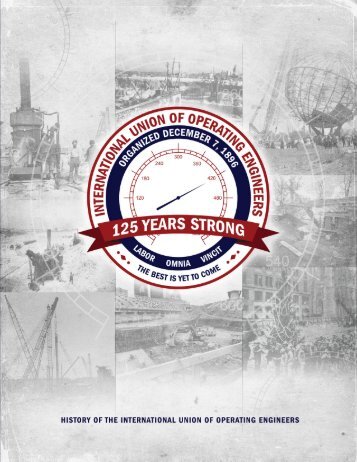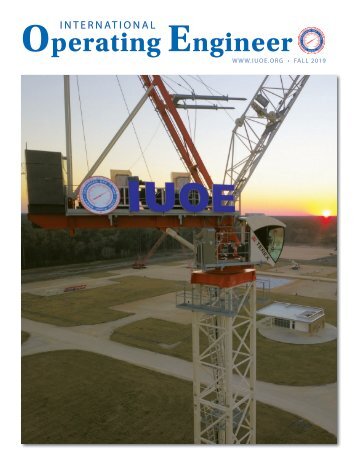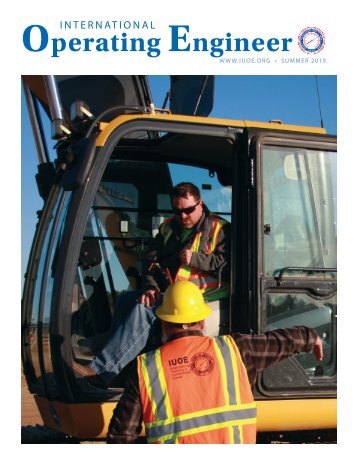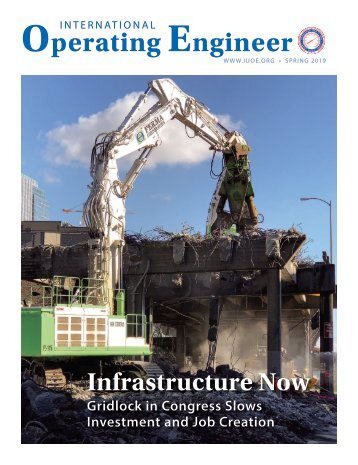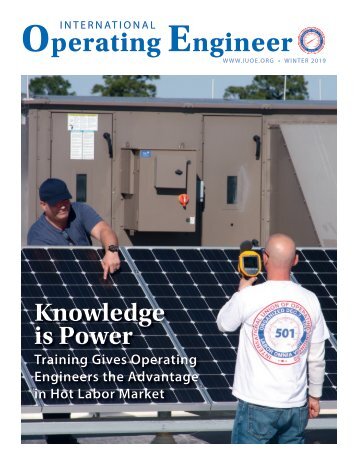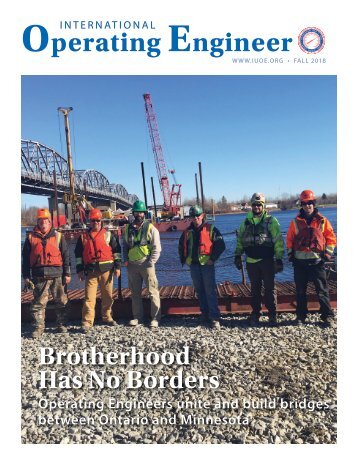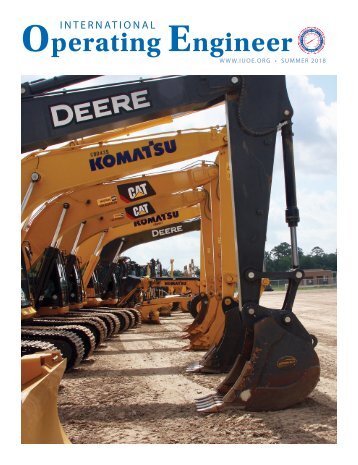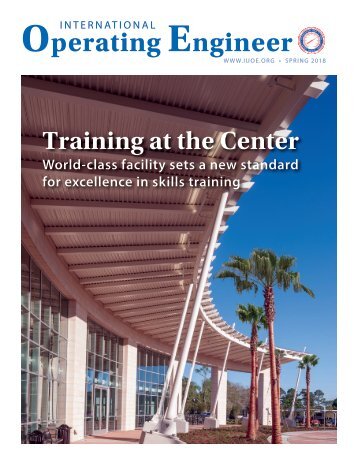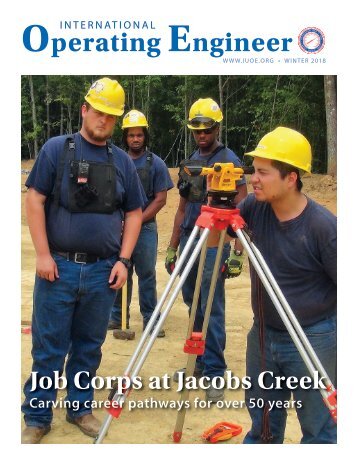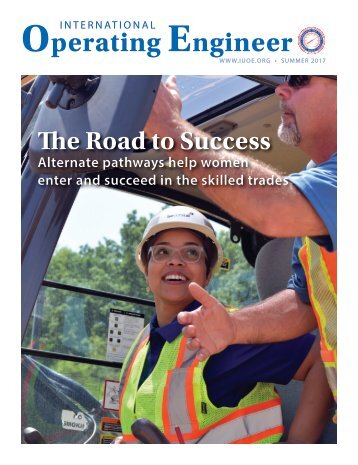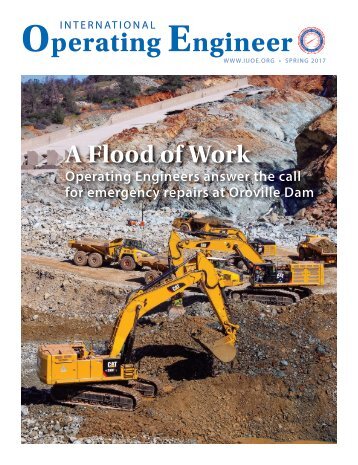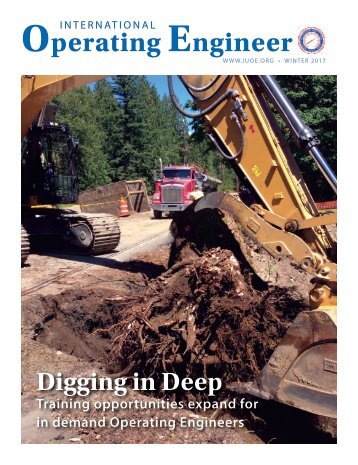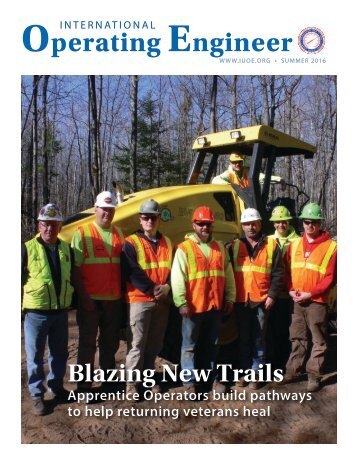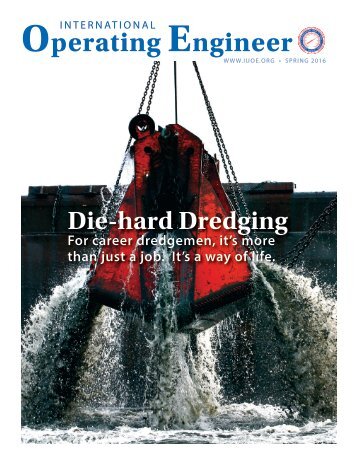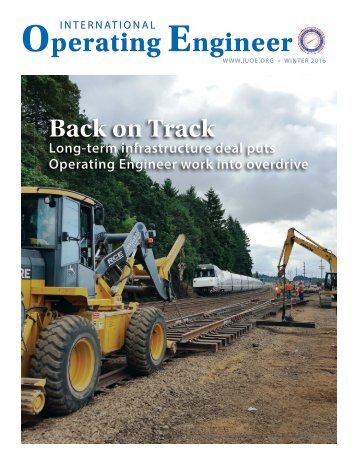125 Years Strong – An IUOE History
- Text
- Wwwiuoeorg
- Vincit
- Omnia
- Engineer
- Convention
- Membership
- Locals
- Operating
- Engineers
INTERNATIONAL UNION OF
INTERNATIONAL UNION OF OPERATING ENGINEERS therein, and thinking it a matter which may interest you, we shall be glad to furnish you with any information you may desire on the subject on receipt of the enclosed.” The following year, minutes of the union’s Eighth Annual Convention on September 12, 1904, recorded ongoing growth, continuing disputes with brewery workers and the I.U.S.E.’s rejection of separate charter demands made by the United German Engineers of New York. What’s more, beginning that year, the first of thousands of operating engineers began work on digging and construction of the Panama Canal after the United States in 1904 assumed oversight of its construction from France. The 50-mile, man-made waterway connecting the Atlantic and Pacific oceans through the Isthmus of Panama in South America, one of mankind’s most significant engineering accomplishments, would be completed in 1914 after the excavation of more than 170 million cubic yards of material. As the union continued to make overall strides, attendance at its 1905 convention in Toronto was one third greater than any previous convention. Newly elected General President Matthew Comerford, who would serve in that position for the next 11 years, reported he had traveled some 21,000 miles on organizing business as the union’s first vice president during the previous year. Scores of I.U.S.E. operating engineers streamed into San Francisco to help rebuild the city after it was leveled by the catastrophic earthquake of April 18, 1906, one of the most significant earthquakes of all time. While locals throughout North America also responded with contributions that aided the city and its engineers, members from throughout the union played a prominent role in clearing the wreckage from the natural disaster and erecting a new city. The 98 delegates from locals attending the union’s 10 th Annual Convention in Milwaukee on September 10, 1906, jointly declared their support for increased participation in politics in order to gain improved conditions for labor through legislation. It was the first definite action taken by the engineers toward using the ballot to improve their members’ hours, wages and working conditions. (1) By the end of its maiden decade, the I.U.S.E. was firmly established and had grown to more than 20,000 members. After 10 years, the union could look back on its steady gains, generally improved conditions for its membership and expansion of its objectives and ambitions. Finances, Politics to Forefront The I.U.S.E. continued on a path of progress into and throughout its second decade, while also keeping up its aggressive political action, its attacks on monopolies, its vigorous fight against “government by injunction” and its continued crusade against the brewery workers’ incursions. However, the union also remained on precarious financial footing during that time as locals continued to deny adequate funding on the international level, which slowed the union’s development. “The most important factor in perpetuating the original independence of the local unions was the continual poverty of the international treasury,” The Economic History of a Trade Union explains. “Even after the general president and general secretary-treasurer had become salaried officers (in 1905), this same insufficiency of income prevented the creation of a staff of field representatives through which the general president might have been able to influence the formulation of local policies and gain adherence to those of the international union.” The I.U.S.E. was essentially rescued from potential economic failure during the last day of its Milwaukee convention in 1906, when less Members of International Union of Steam Engineers Local No. 4 of Boston excavate the site for construction of the Mystic Generating Station in Everett, Massachusetts, during the early 1900s. than one-fourth of the delegates in attendance passed a levy on members for an additional 50 cents above the current dues and fees. But although the assessment was desperately needed, disgruntled members within the I.U.S.E. used the issue as a rallying point, bemoaning that the vote on the assessment had been taken on the afternoon of the next to last day of the convention and only 46 of a possible 153 authorized votes were cast. (1) During that period and into the early 1910s, the I.U.S.E. maintained a measure of control over locals through its power to revoke the charters from any insubordinate, wayward or mismanaged locals. (As The Economic History of a Trade Union points out in 1964, however, in later periods, “the power of the general president to depose local officers and place local unions under the supervision of international appointees was found to be much more effective” than the power to revoke charters.) The union also attempted to halt the increasing mobility of members within its hoisting and portable industries, who were more-regularly “traveling” from one local’s jurisdiction to another for work, through the implementation of a permit fee. As problems were arising from engineers moving freely among locals, which could adversely affect conditions and stability of host locals simply through an overwhelming influx of transient workers, requiring permit fees to work in jurisdictions outside that of their home locals was seen as a means to control traveling members. (1) Meanwhile, ongoing bickering with the brewery workers, who refused to abide by A.F.L. decisions that gave complete jurisdiction of engineers to the I.U.S.E., resulted in the national federation revoking the brewery workers’ charter on June 1, 1907. In a dramatically more-significant judgement later that year, the A.F.L. convention held November 11 to 23, 1907, in Norfolk, Virginia, adopted Resolution No. 124, which had been submitted by the I.U.S.E., awarding jurisdiction over the operation of all machinery used on building work to the union’s hoisting and portable branch. The verdict gave the I.U.S.E complete jurisdiction over the motive power of all derricks, cement mixers, hod hoists, pumps and other machines used on construction jobs. LABOR OMNIA VINCIT WORK CONQUERS ALL
- Page 2: LABOR OMNIA VINCIT WORK CONQUERS AL
- Page 6: INTERNATIONAL UNION OF OPERATING EN
- Page 10: INTERNATIONAL UNION OF OPERATING EN
- Page 14: INTERNATIONAL UNION OF OPERATING EN
- Page 20: INTERNATIONAL UNION OF OPERATING EN
- Page 24: INTERNATIONAL UNION OF OPERATING EN
- Page 28: INTERNATIONAL UNION OF OPERATING EN
- Page 32: INTERNATIONAL UNION OF OPERATING EN
- Page 36: INTERNATIONAL UNION OF OPERATING EN
- Page 40: INTERNATIONAL UNION OF OPERATING EN
- Page 44: INTERNATIONAL UNION OF OPERATING EN
- Page 48: INTERNATIONAL UNION OF OPERATING EN
- Page 52: INTERNATIONAL UNION OF OPERATING EN
- Page 56: INTERNATIONAL UNION OF OPERATING EN
- Page 60: INTERNATIONAL UNION OF OPERATING EN
- Page 64: INTERNATIONAL UNION OF OPERATING EN
- Page 68:
INTERNATIONAL UNION OF OPERATING EN
- Page 72:
INTERNATIONAL UNION OF OPERATING EN
- Page 76:
INTERNATIONAL UNION OF OPERATING EN
- Page 80:
INTERNATIONAL UNION OF OPERATING EN
- Page 84:
INTERNATIONAL UNION OF OPERATING EN
- Page 88:
INTERNATIONAL UNION OF OPERATING EN
- Page 92:
INTERNATIONAL UNION OF OPERATING EN
- Page 96:
INTERNATIONAL UNION OF OPERATING EN
- Page 100:
INTERNATIONAL UNION OF OPERATING EN
- Page 104:
INTERNATIONAL UNION OF OPERATING EN
- Page 108:
INTERNATIONAL UNION OF OPERATING EN
- Page 112:
INTERNATIONAL UNION OF OPERATING EN
- Page 116:
INTERNATIONAL UNION OF OPERATING EN
- Page 120:
INTERNATIONAL UNION OF OPERATING EN
- Page 124:
INTERNATIONAL UNION OF OPERATING EN
Inappropriate
Loading...
Mail this publication
Loading...
Embed
Loading...
International Operating Engineer
HEADQUARTERS
INTERNATIONAL UNION OF OPERATING ENGINEERS (IUOE)
1125 17th Street, NW
Washington, DC 20036
202 429-9100
CONTACT US
Send us an email here.
©2010 International Union of Operating Engineers. All Rights Reserved.|Terms Of Use|Privacy Statement|Sitemap

